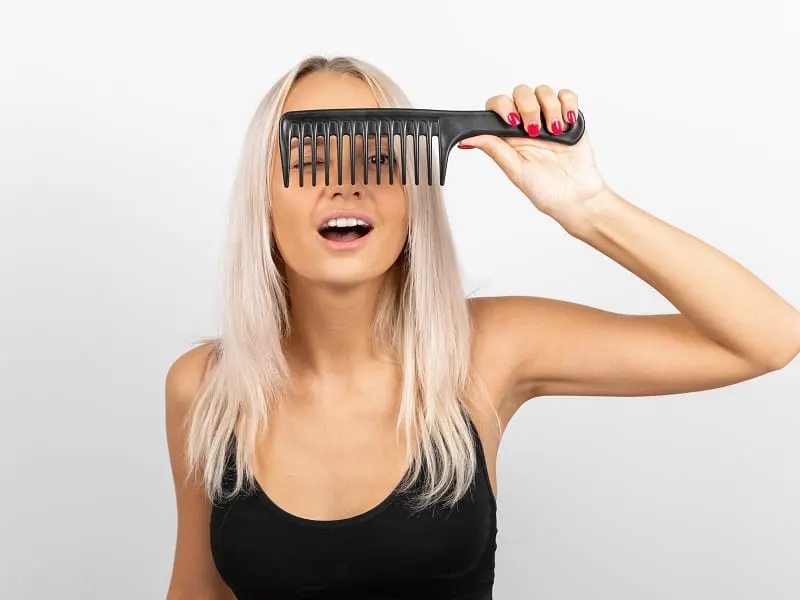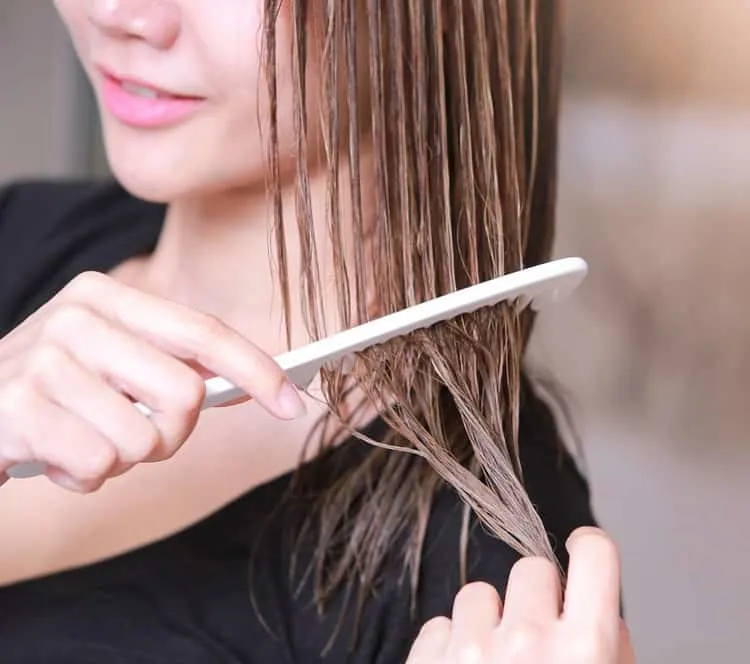When you buy through links on our site, we may earn an affiliate commission.
Thin hair is for the birds, but there is no reason why possessing this hair type should be a challenge you can’t overcome.
Combing hair is an essential part of maintaining hair health, especially when hair is wet and vulnerable. Finding the right comb for your thin hair is critical to protecting your strands and creating gentle pressure on your hair and scalp.
Which Type of Combs to Use for Thin Hair?
Before we discover the best combs you should always be sure you’re combing your hair in the safest way possible.
Follow the rules

When combing thin hair, there are a few rules you should follow. First, hair should always be combed from the tip to the root. Start at the bottom portion of the hair and work your way up to avoid serious knots and tangles.
Wide-toothed combs are best on wet hair

As for the actual comb you choose, wide-toothed varieties are your best bet. Wide teeth, as opposed to tight, narrow ones prevent snagging, especially on fragile wet hair.
Fine-toothed Combs Help with Styling
Because the teeth on these combs are closely set, it can be a nightmare on tangled locks and if you’re experiencing thinning hair, then it’s not a good idea to rip out more!
If your hair is dry and already blown out or air-dried, however, a fine-toothed wooden comb is perfect. Wooden combs are less likely to produce static compared to plastic combs, which helps in reducing frizz and hair breakage. They are typically smoother and more gentle on the scalp. The soft edges of wooden teeth can massage the scalp, stimulating blood circulation.
You can use Breezelike Fine-toothed Comb for styling your hair. It is made of 100% natural fragrant green sandalwood. It can be used to create volume and arrange hair precisely how you want it. Gentle teasing can be done with this type of comb but should be done with a practiced hand so you don’t create knots later on.
FAQs
It is recommended that you brush or comb your hair twice each day, regardless of thickness.
Avoid brushing your hair when it is wet because the moisture causes the hair to stretch easily. Be sure to brush gently because vigorous brushing causes hair damage and breakage.
You can use either a comb or a brush for thin hair. The most important thing to consider is the roughness of the bristles or comb.
A soft-bristled brush is the best choice for brushing thin hair, but brushing with a soft-toothed comb is also a good option.
Wooden combs allow you to distribute healthy oils more effectively and help your hair become shinier and bouncier.
For thin hair, keeping your hair nourished is crucial to avoid hair loss. Using a wooden comb is a great way to combat breakage and promote healthy hair.
Aggressively combing or brushing your hair leads to damage, breakage, and thinning. Instead, comb the hair gently, and you are less likely to see thinning due to combing.
Choosing the best comb for your thin hair really comes down to your needs. If you crave a comb for your wet hair, wide-toothed is always the way to go. If you’re looking to tease, style, and create volume, then a handy comb with fine teeth should be a must for your bathroom cabinet.
